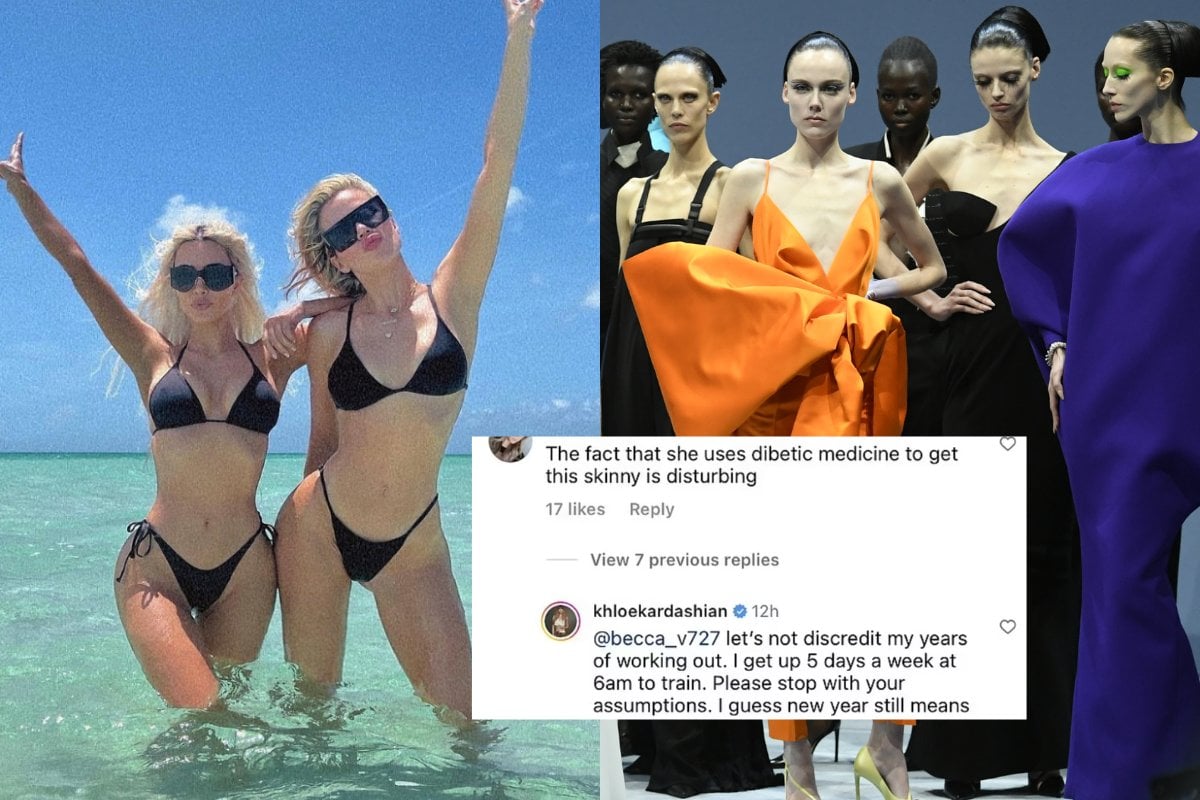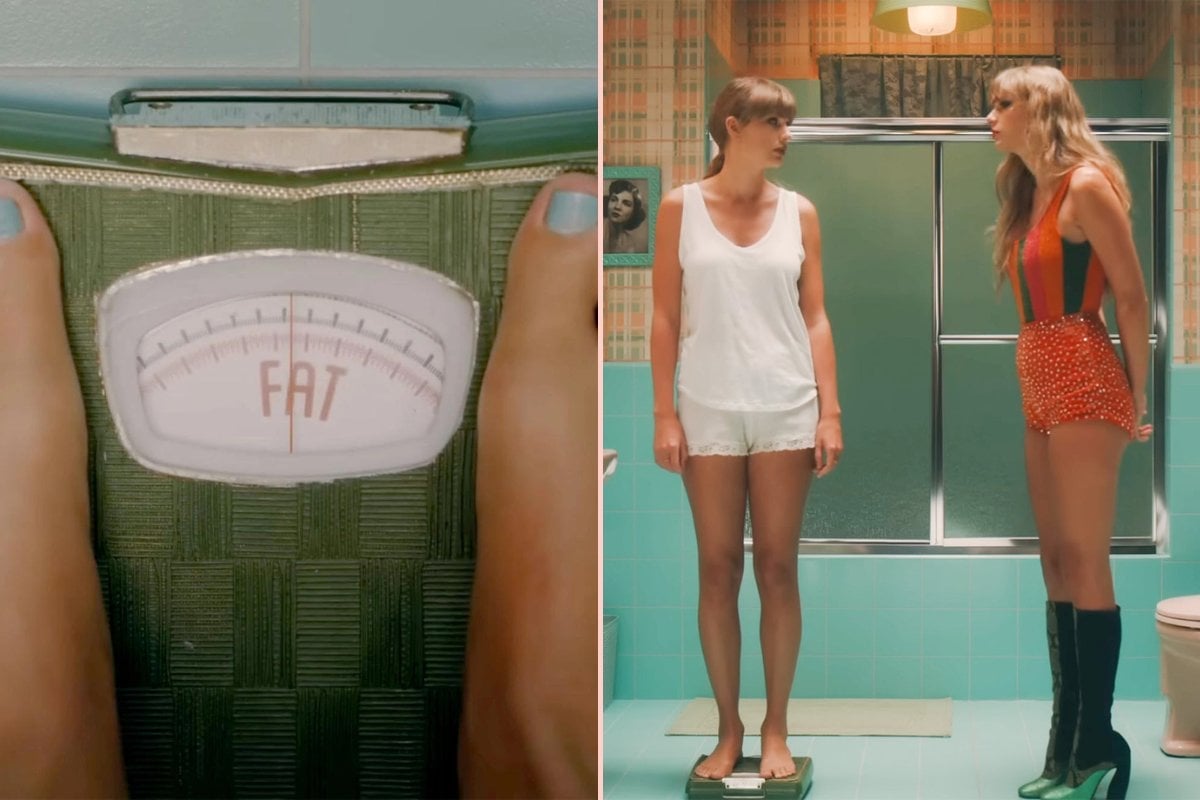
Being size zero and ultra-thin is a trend that’s in again, apparently.
Well, that is according to trend reports following fashion week and the big Kardashian slim down.
In case you missed it, sisters Kim and Khloe appear to be shrinking before our eyes. Couple that with the notable absence of size inclusion on runways around the world in the past few months, and conversations have begun to emerge about how the fashion industry has gone back to old ways, with a worrying return to the "size zero trend" as the aspirational and ideal beauty standard.
The rise of Ozempic - the drug used to treat Type 2 diabetes that is widely speculated to be used by celebrities for weight loss, and is now in short supply due to increased demand, is another strong indication that "thin is in".
Read more: 'Everyone is on Ozempic': Why Hollywood's newest weight loss trend is so concerning.
But here’s the thing; it never went away. We have evidence of that pretty much everywhere we look, every damn day.
And tokenistic body inclusion by consumer brands, media, fashion, beauty and pop-culture industries, in my opinion, is the best we’ve had yet.
You could say curvy has been more "in" than in recent past decades, with Kardashian-inspired, over-amplified derrieres now at a shopping centre and gym near you. But only with curves in the right places.
Double chins, pouched belly and big thighs, no.
Small hips and a big bust and butt, yes.
While we probably can’t stop the ‘thin is beautiful’ messaging and seasonal body shape trends served up to our conscious and subconscious each and every day, what we can do is to simply be aware of the language and visual circus around us.


Top Comments